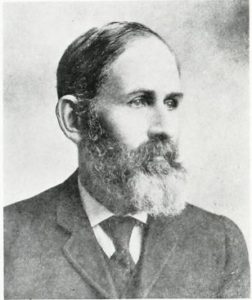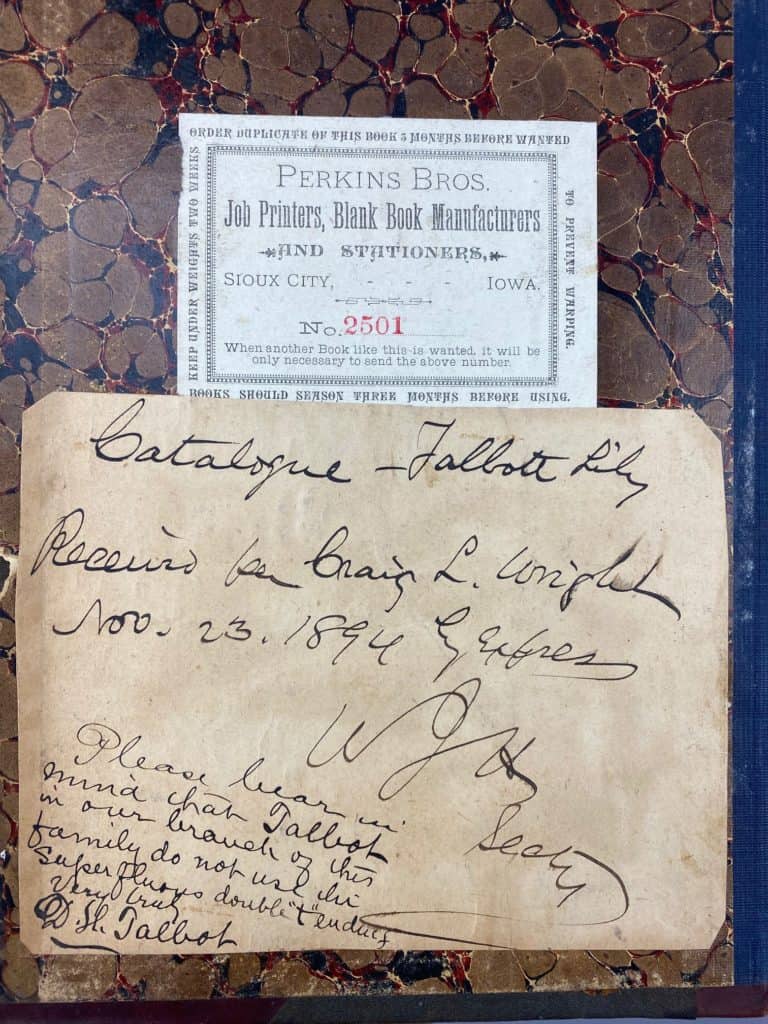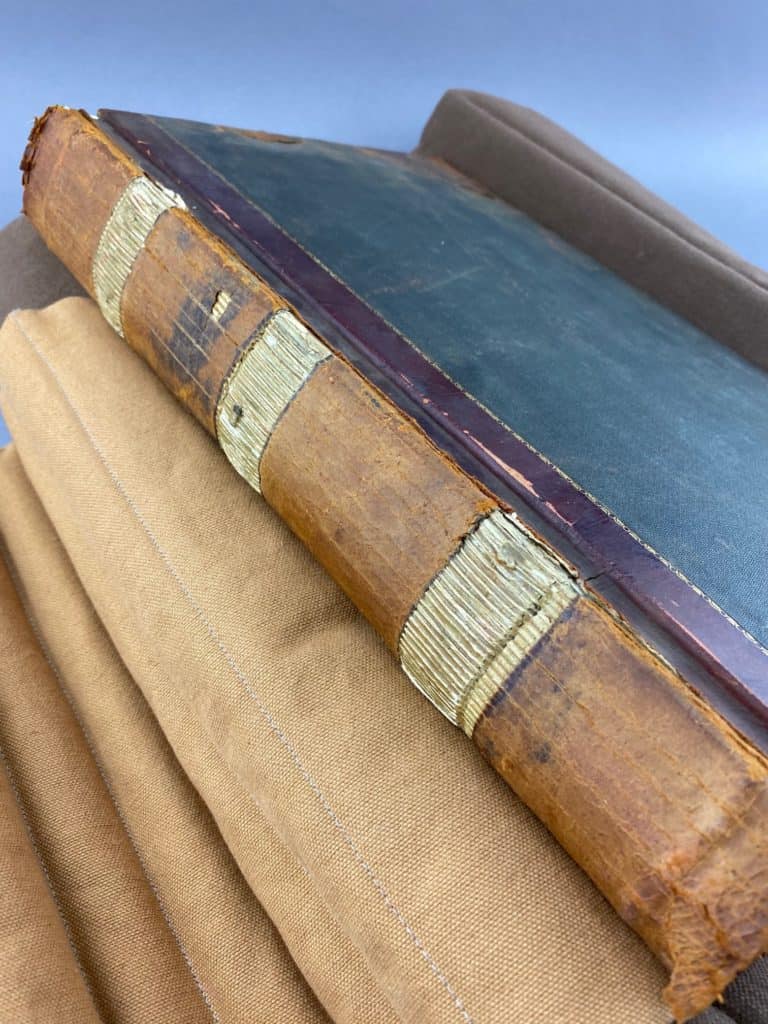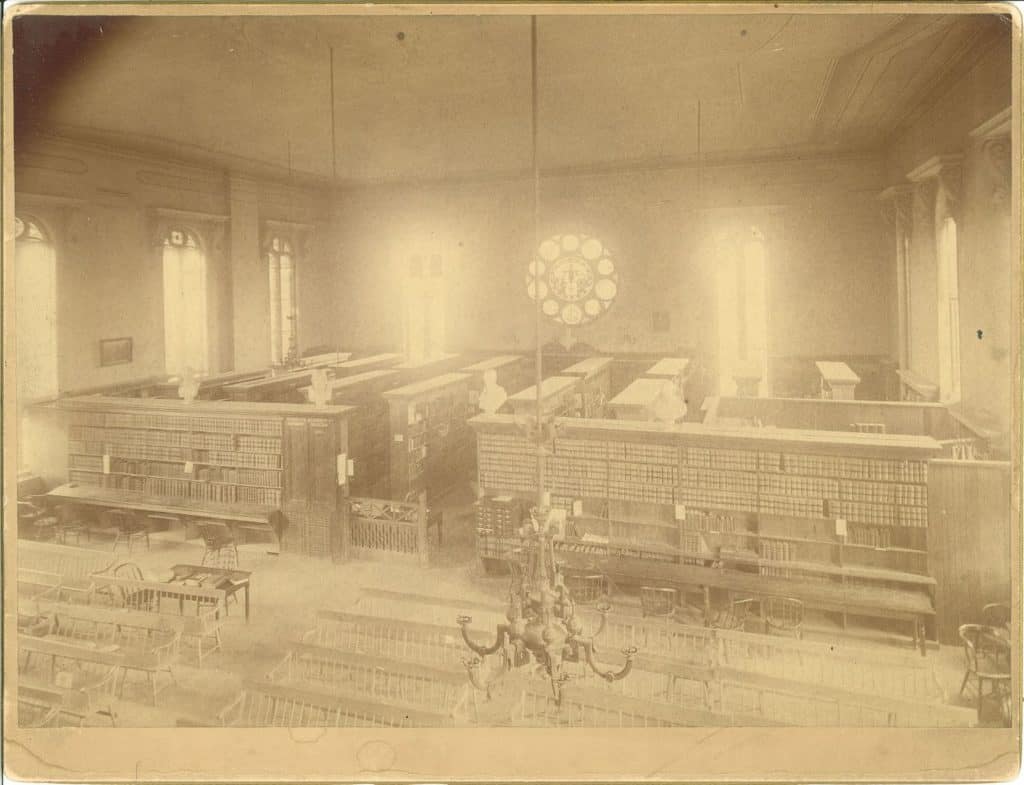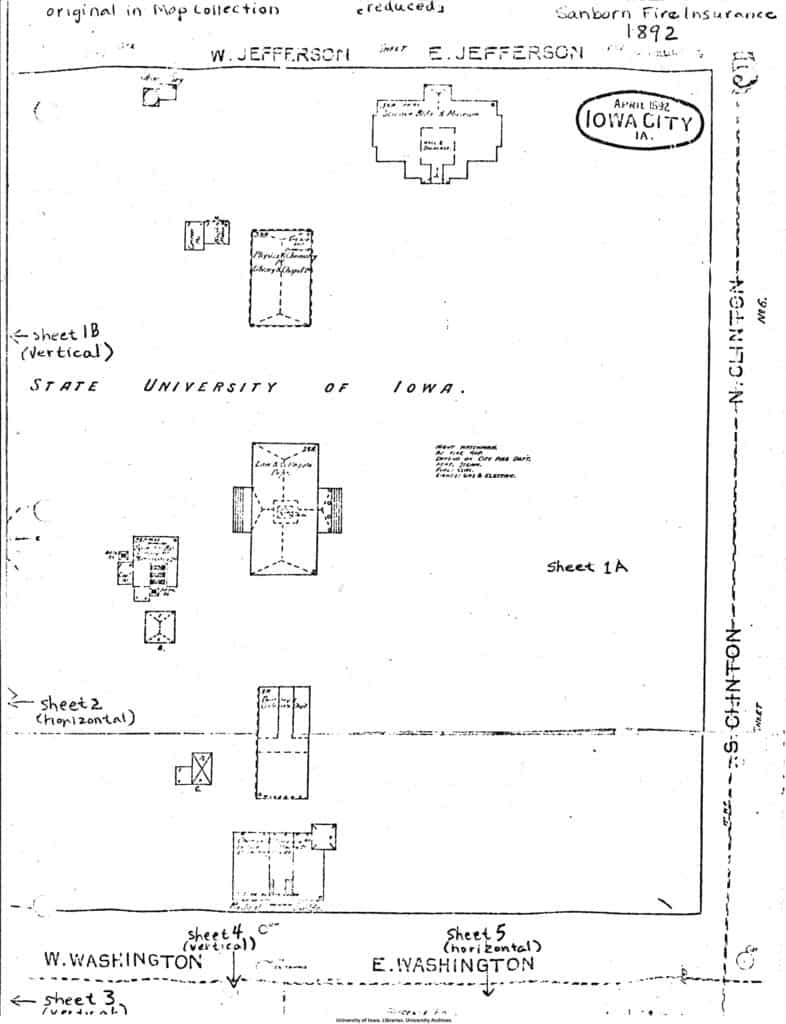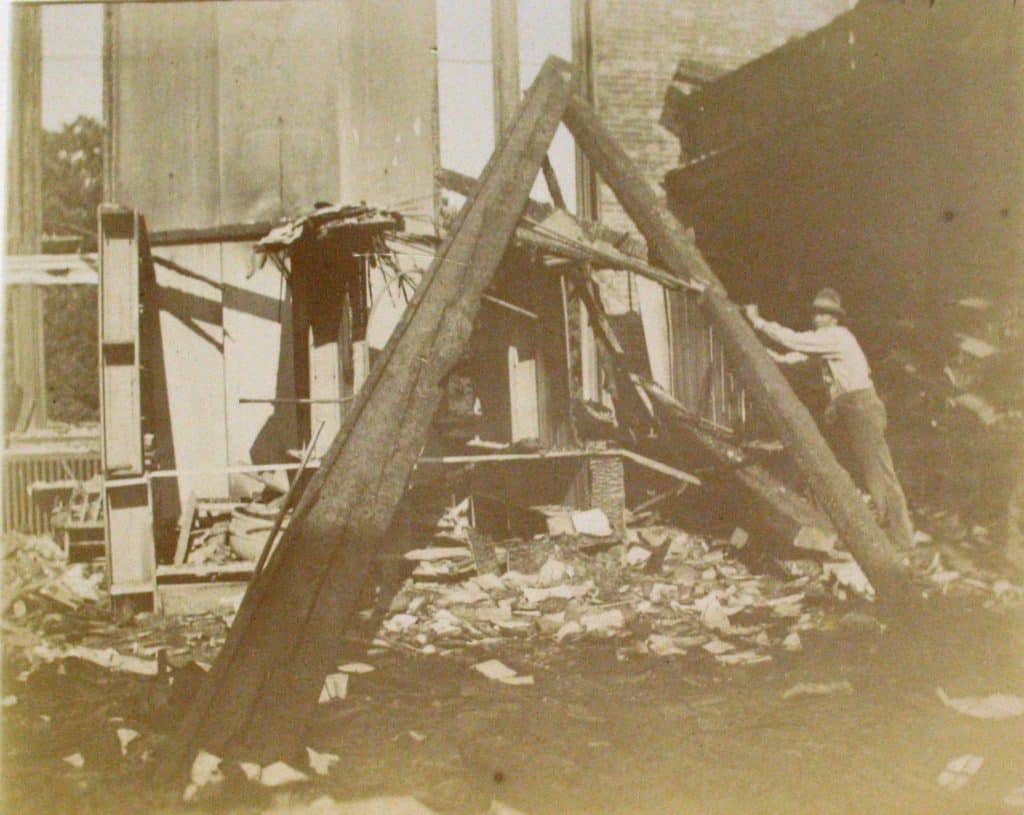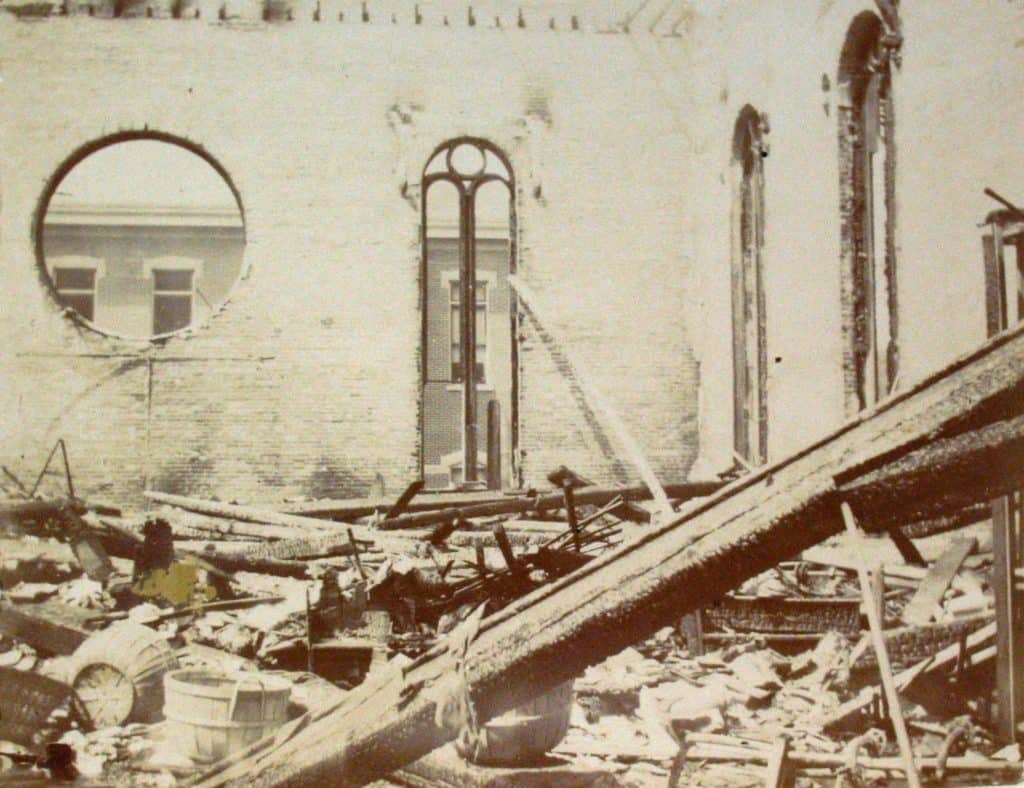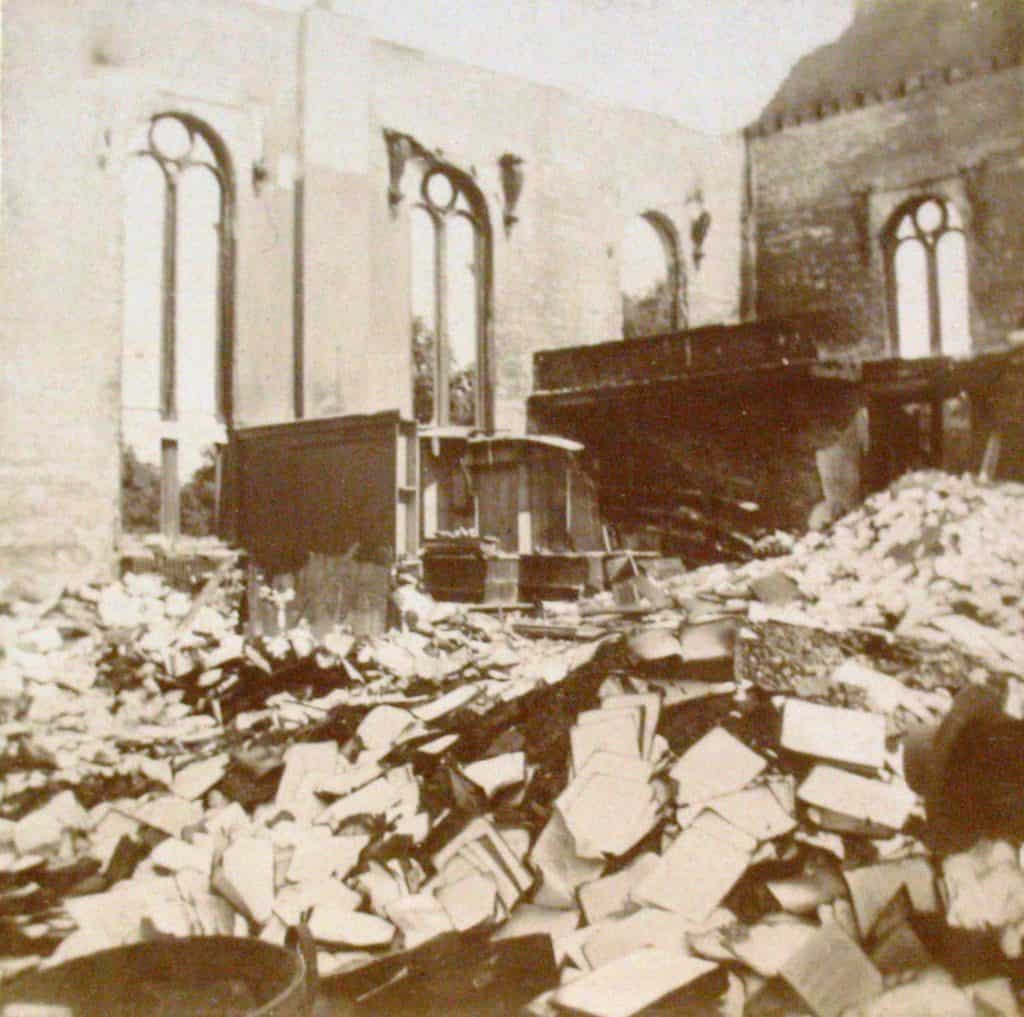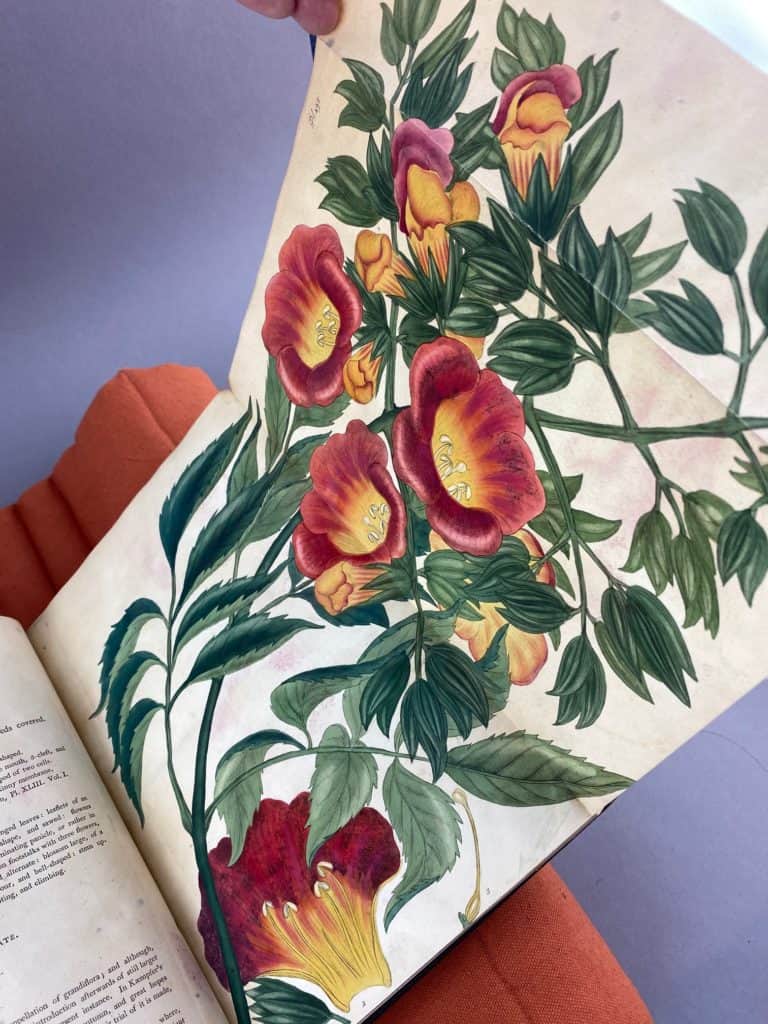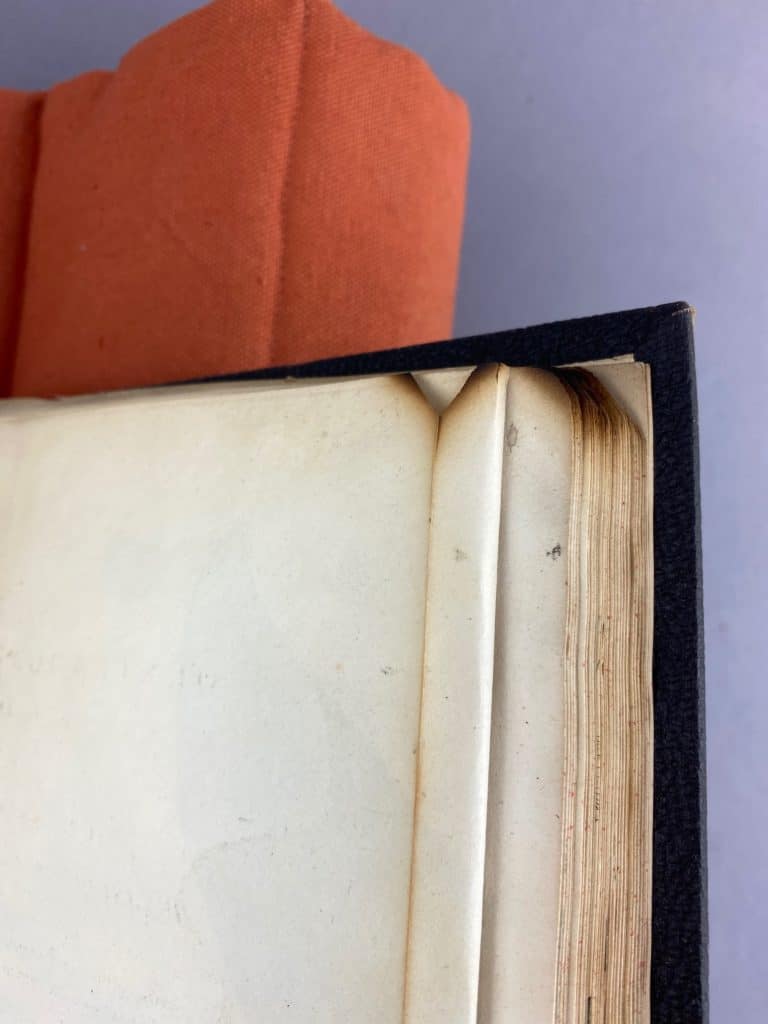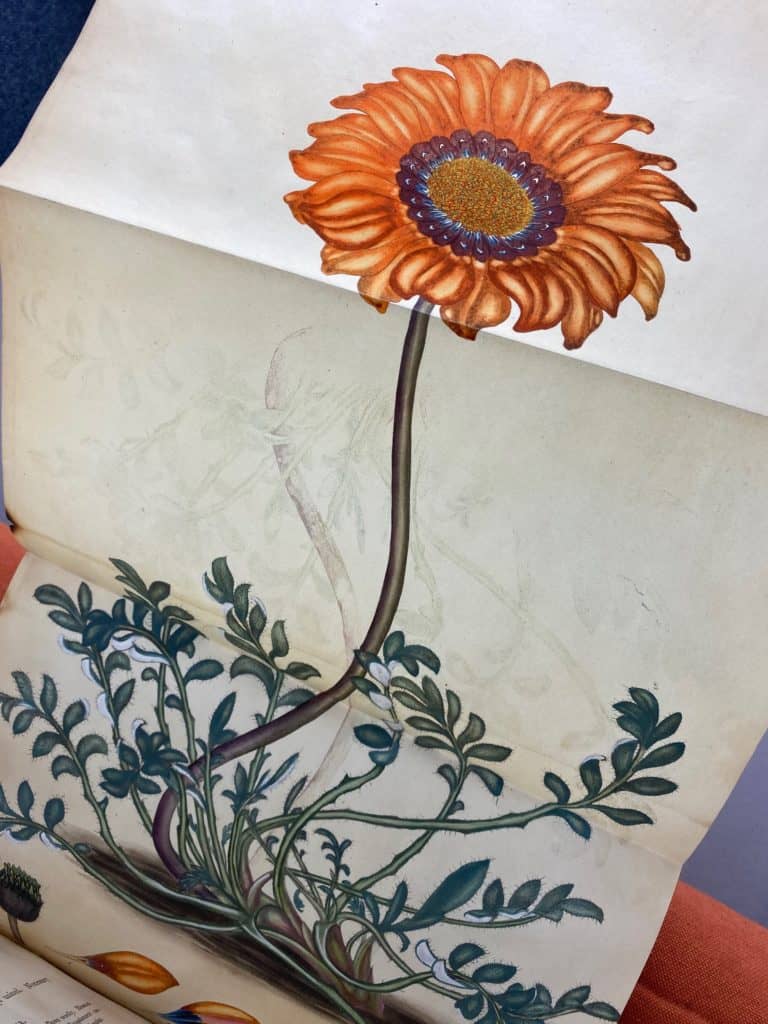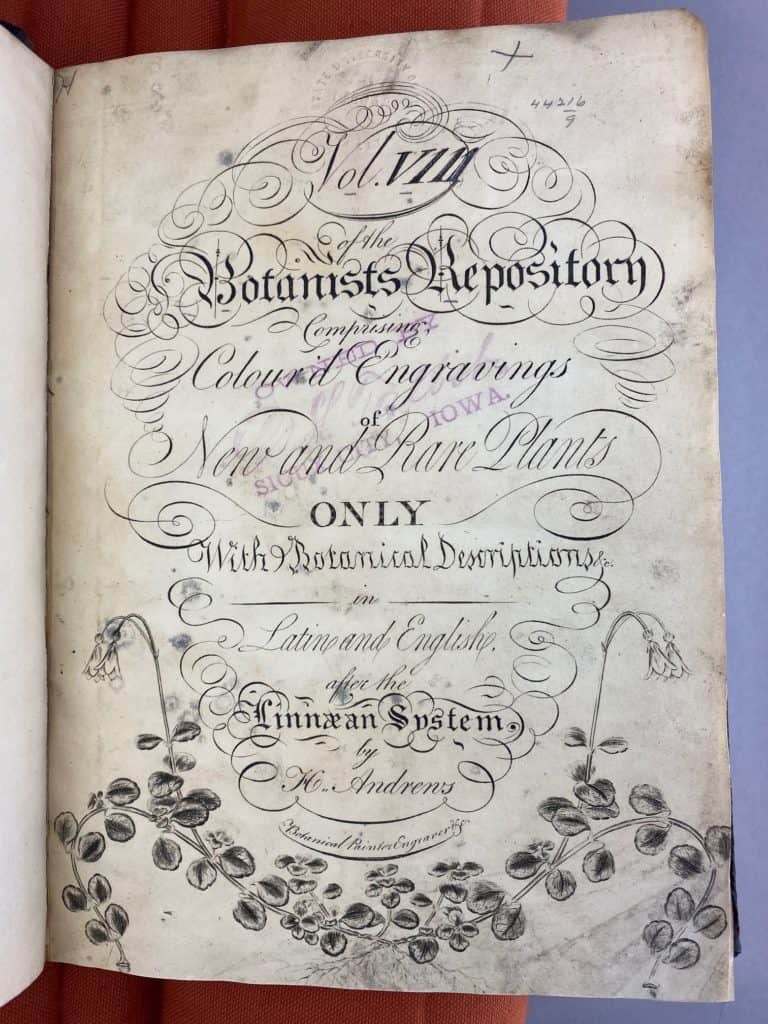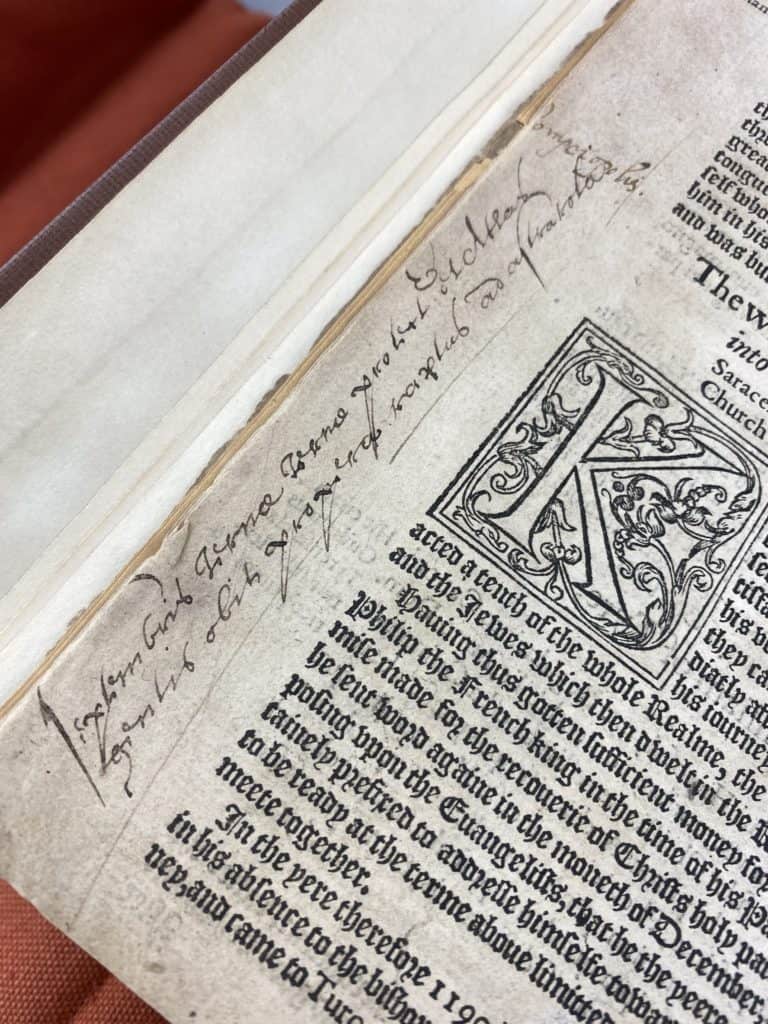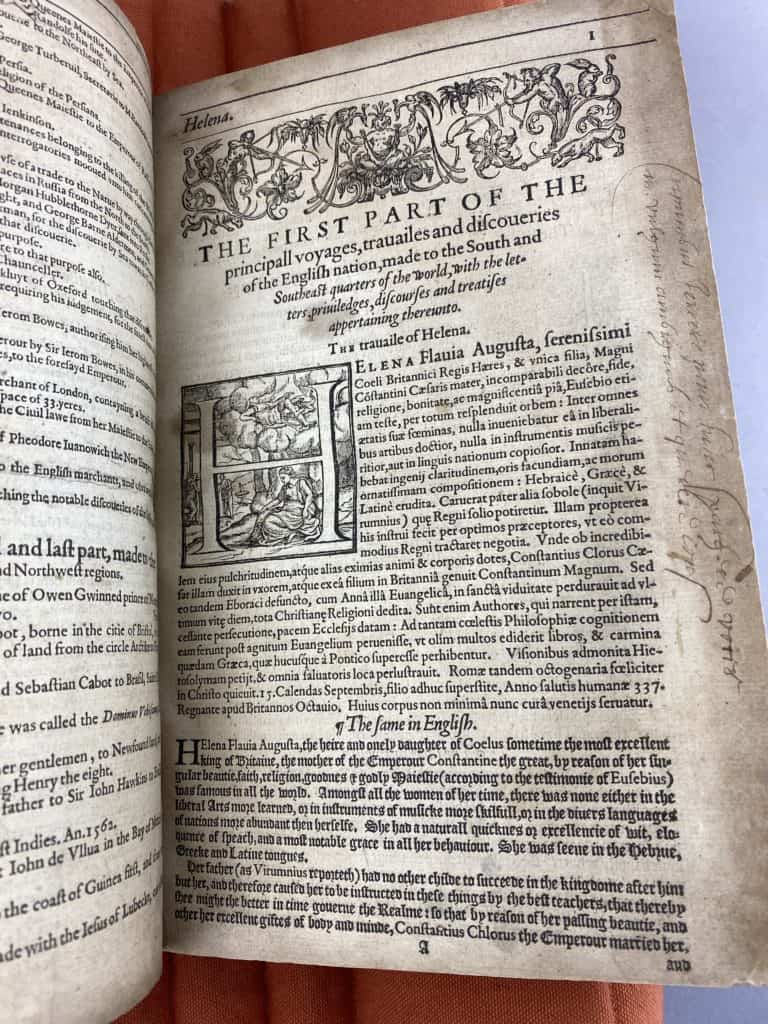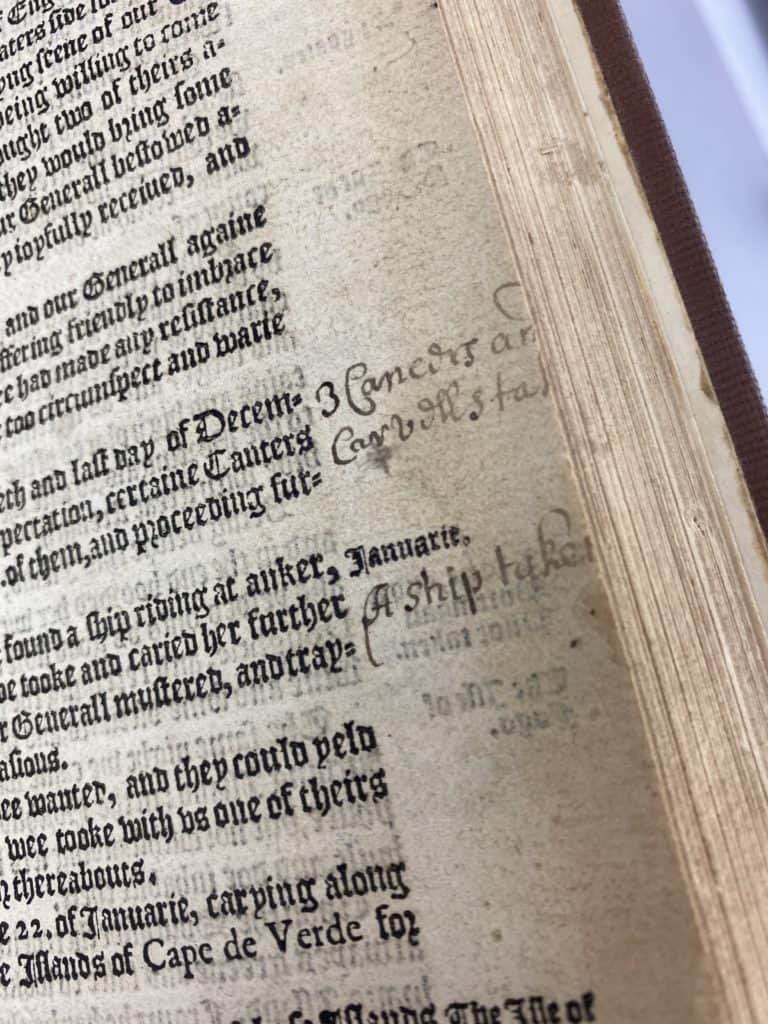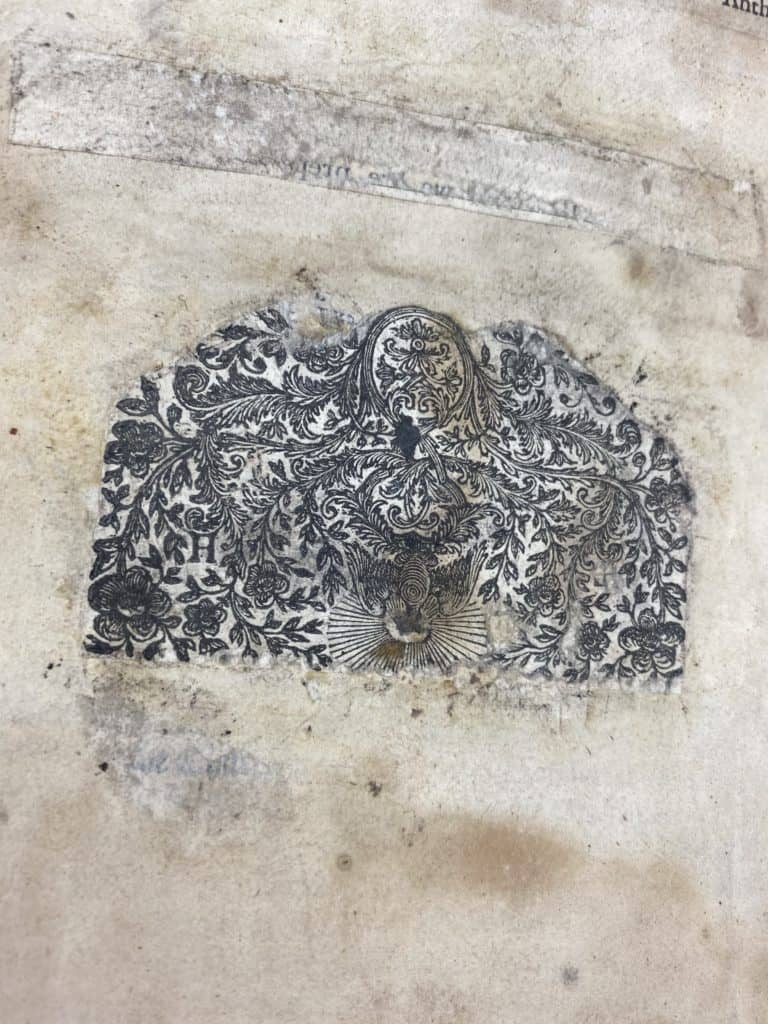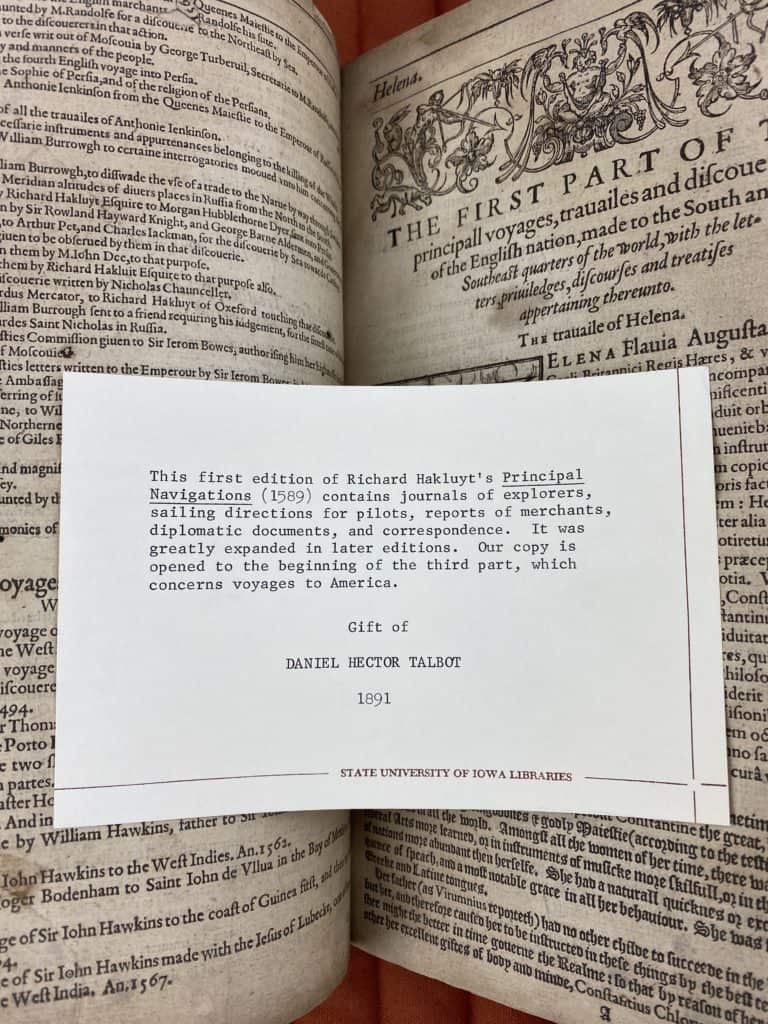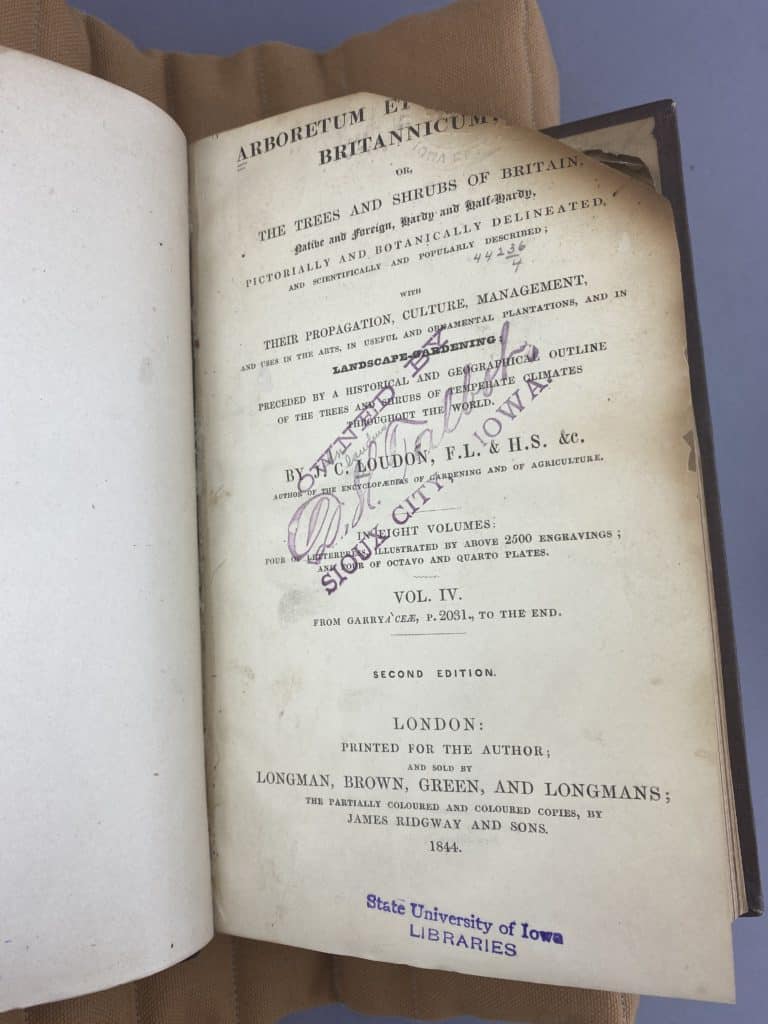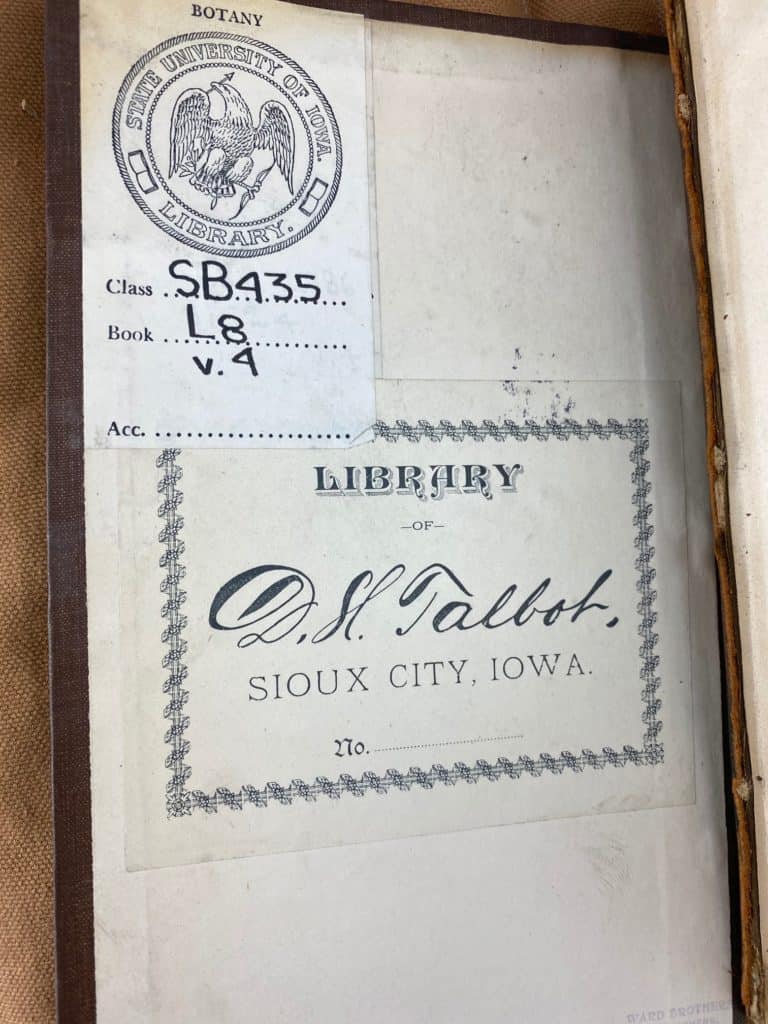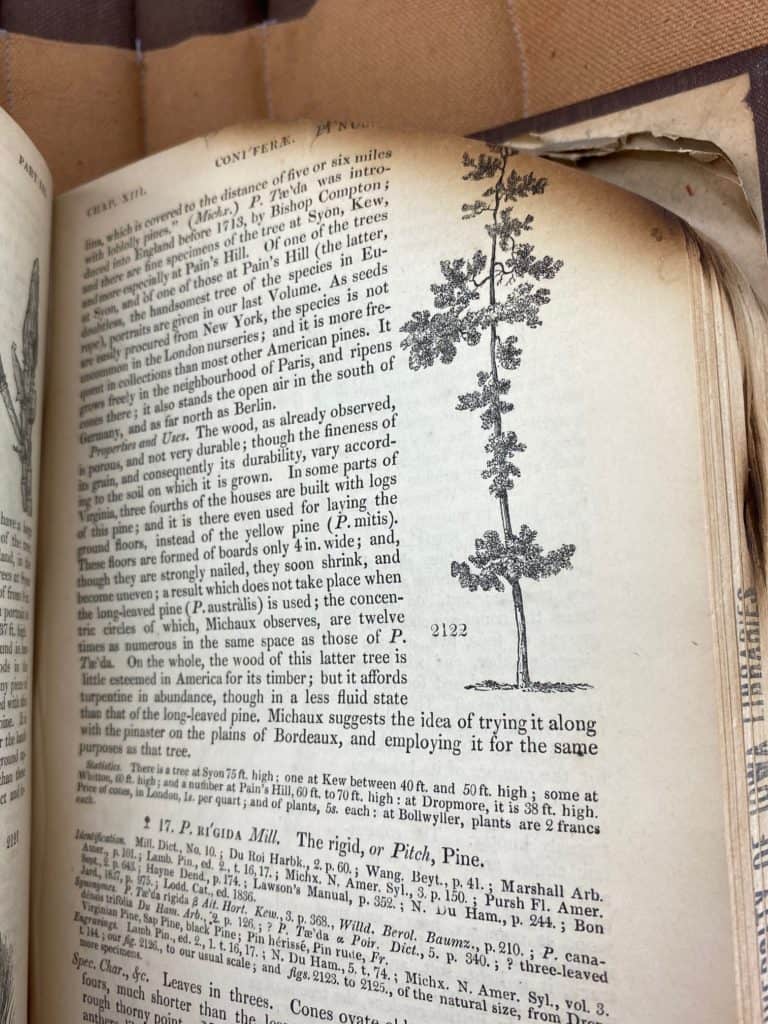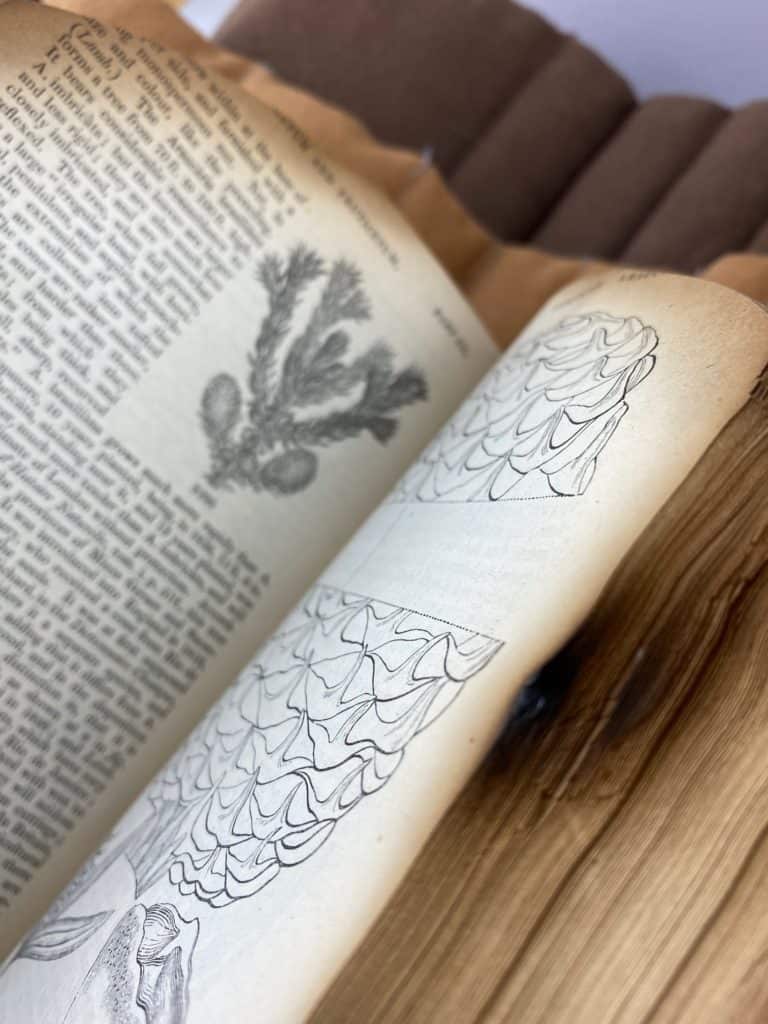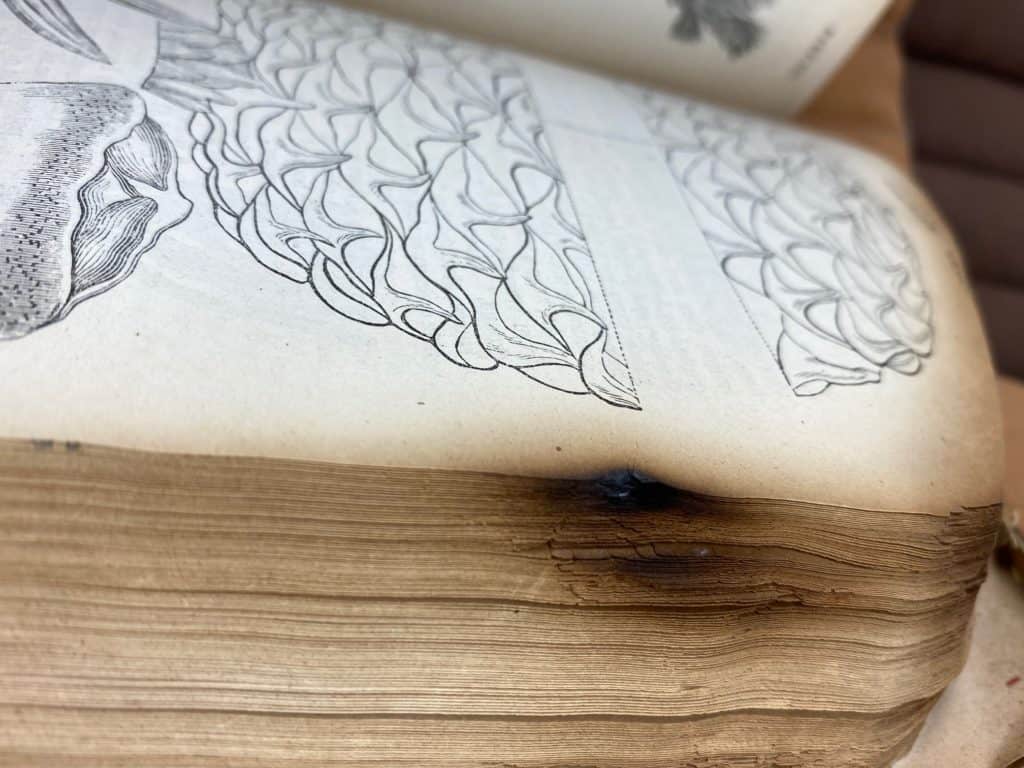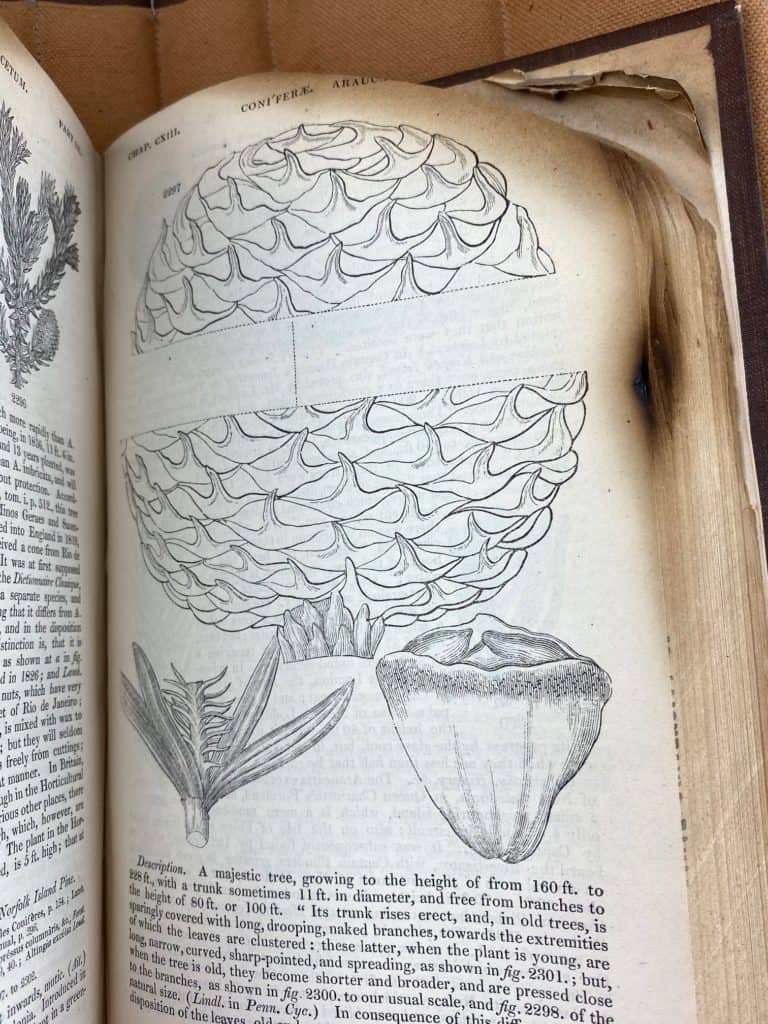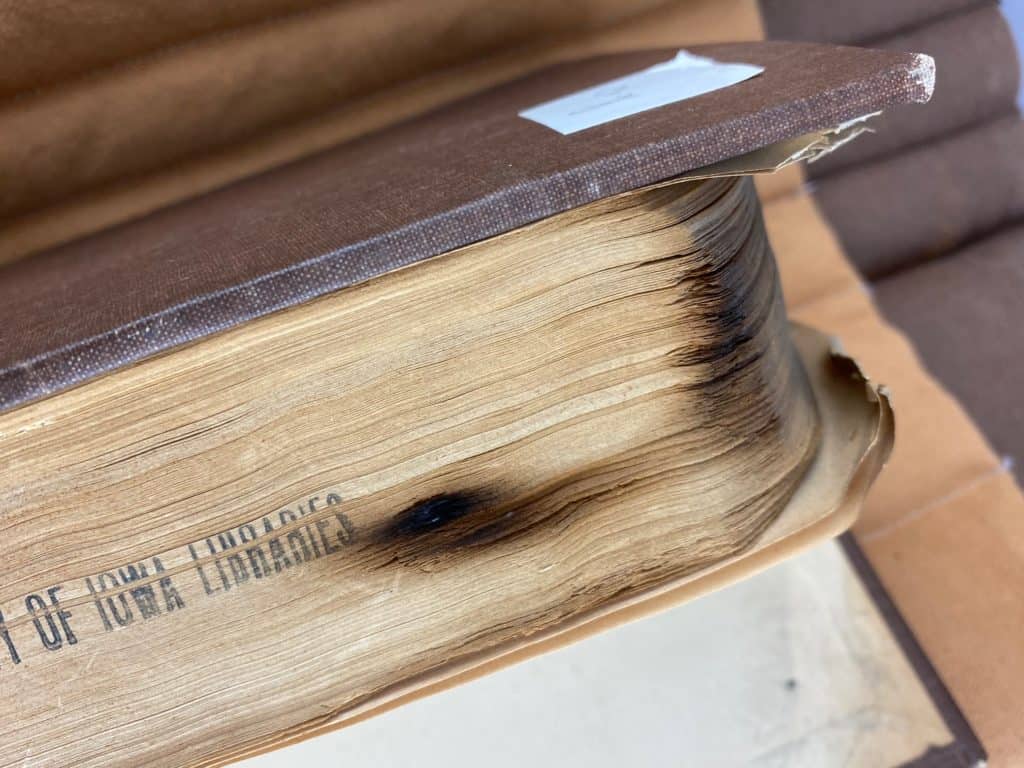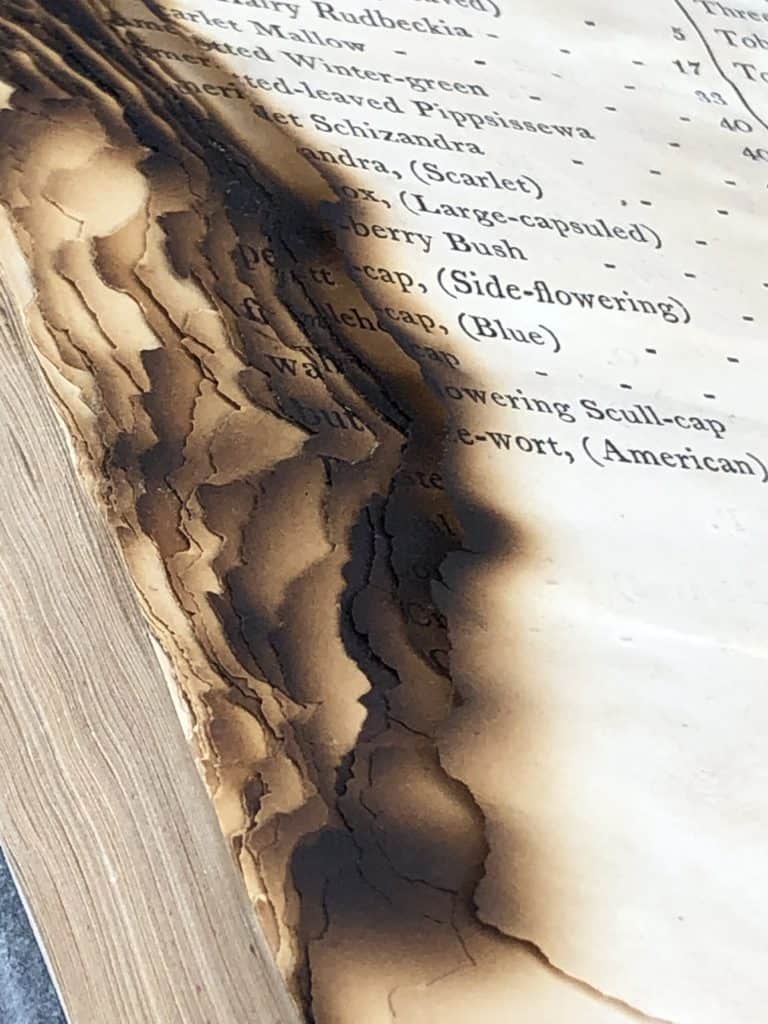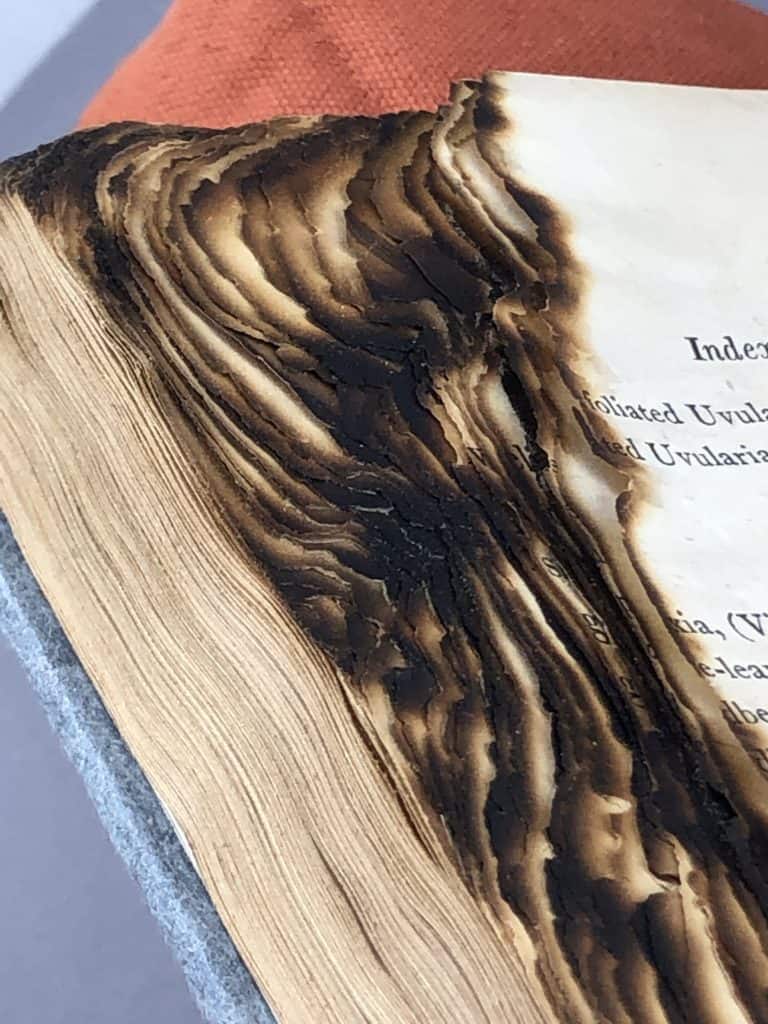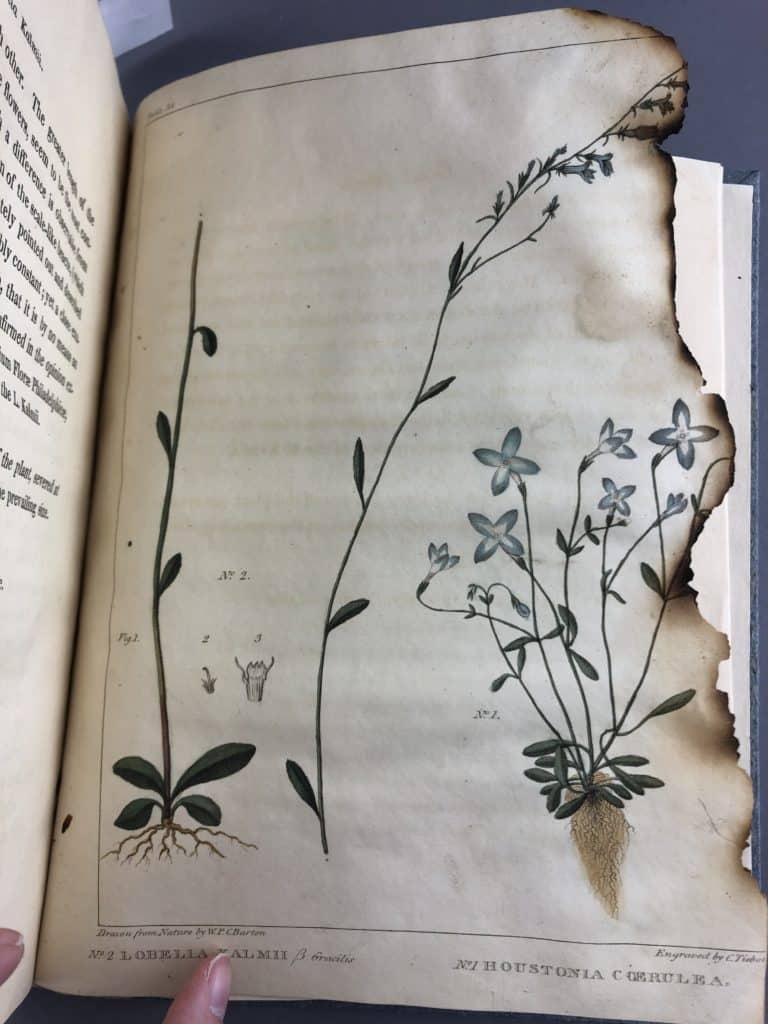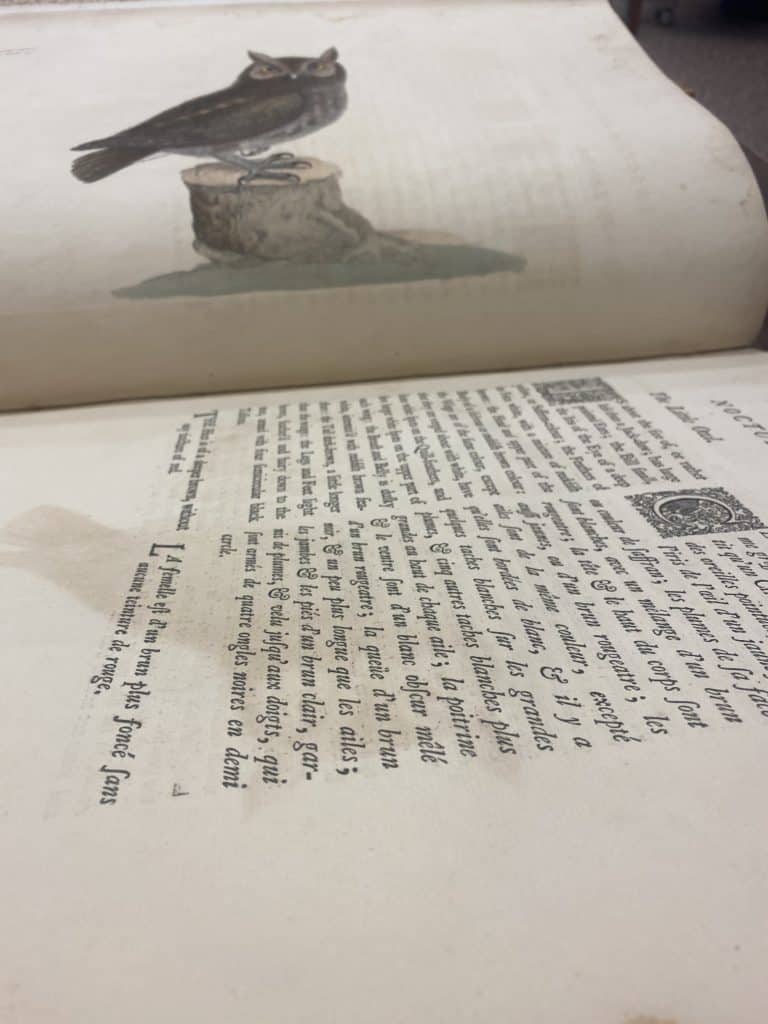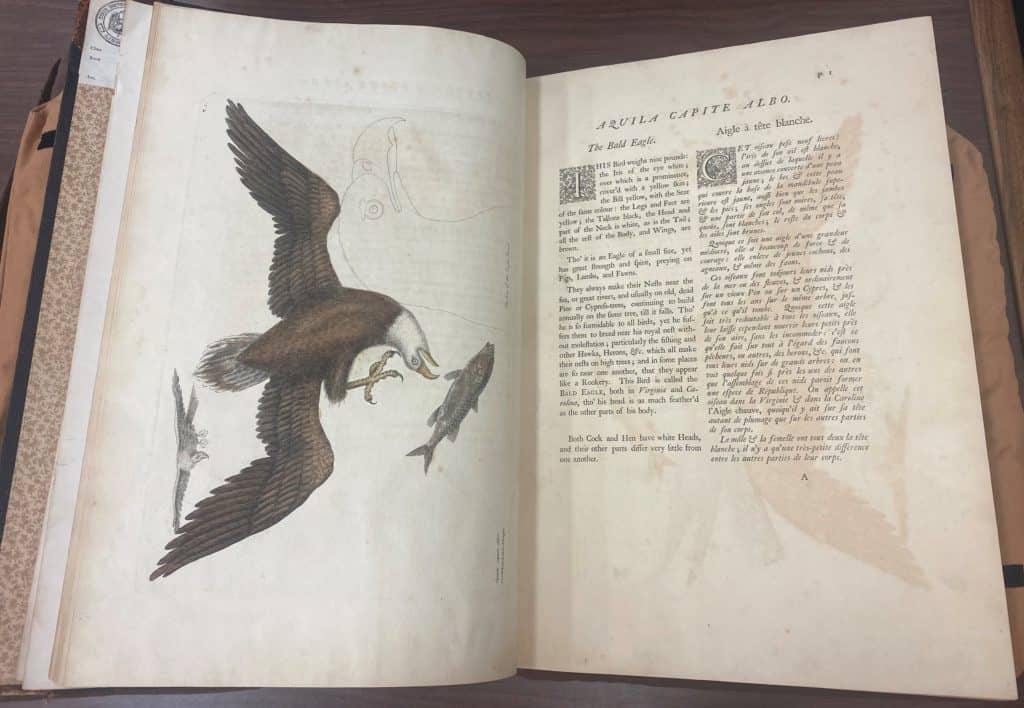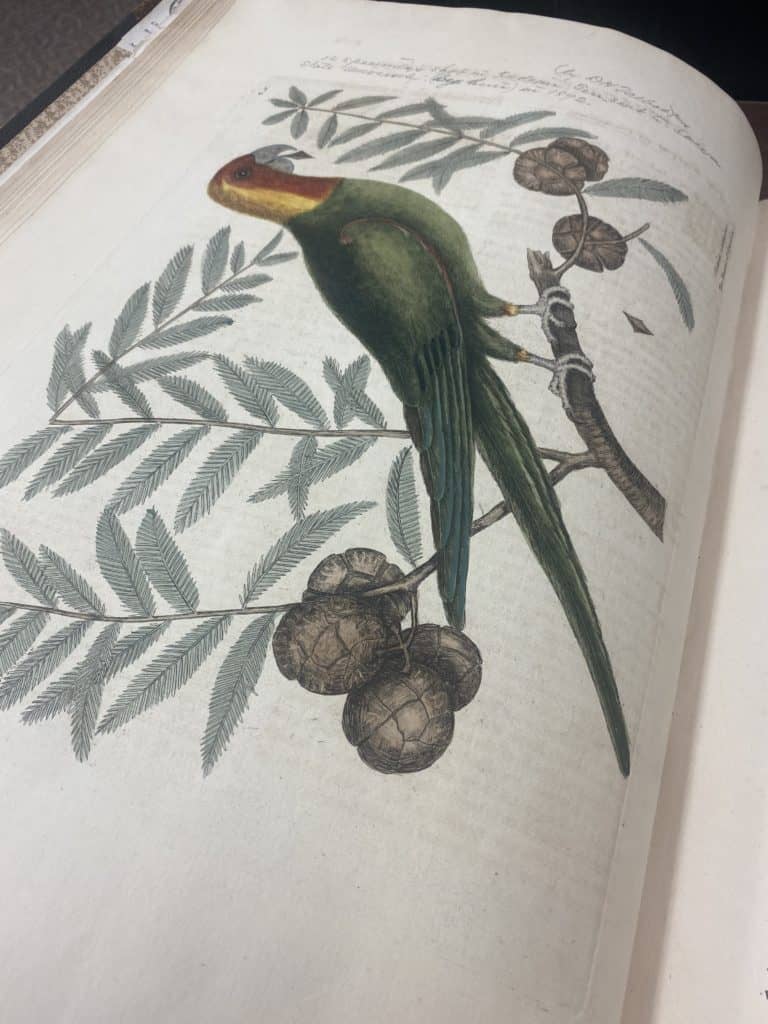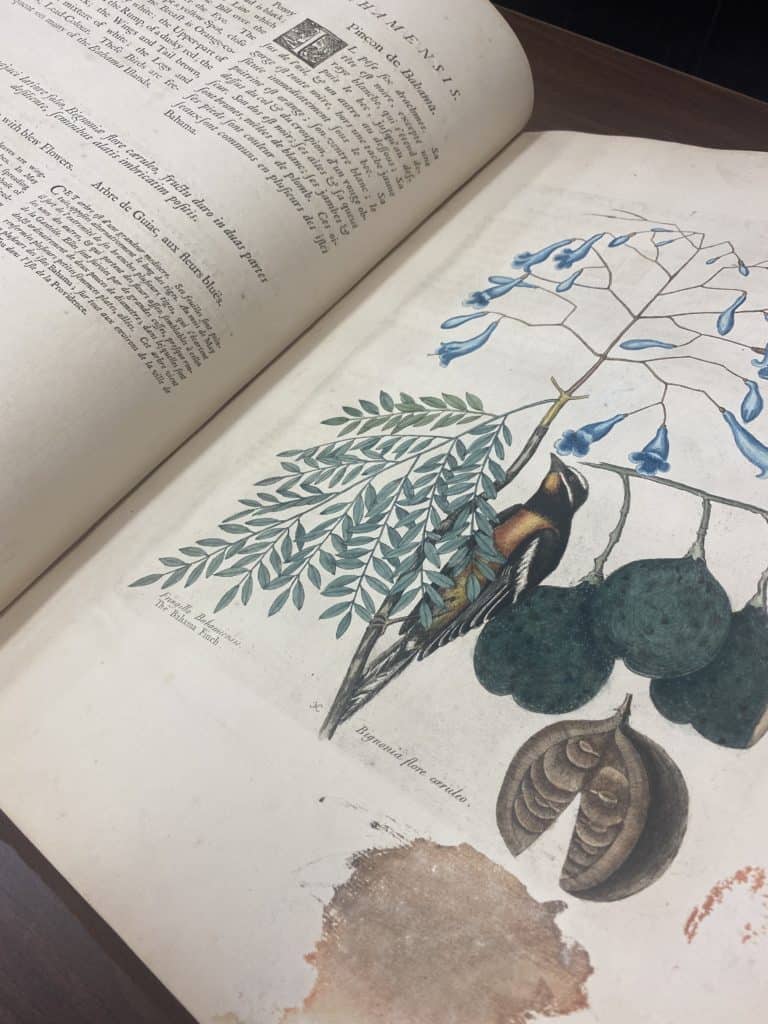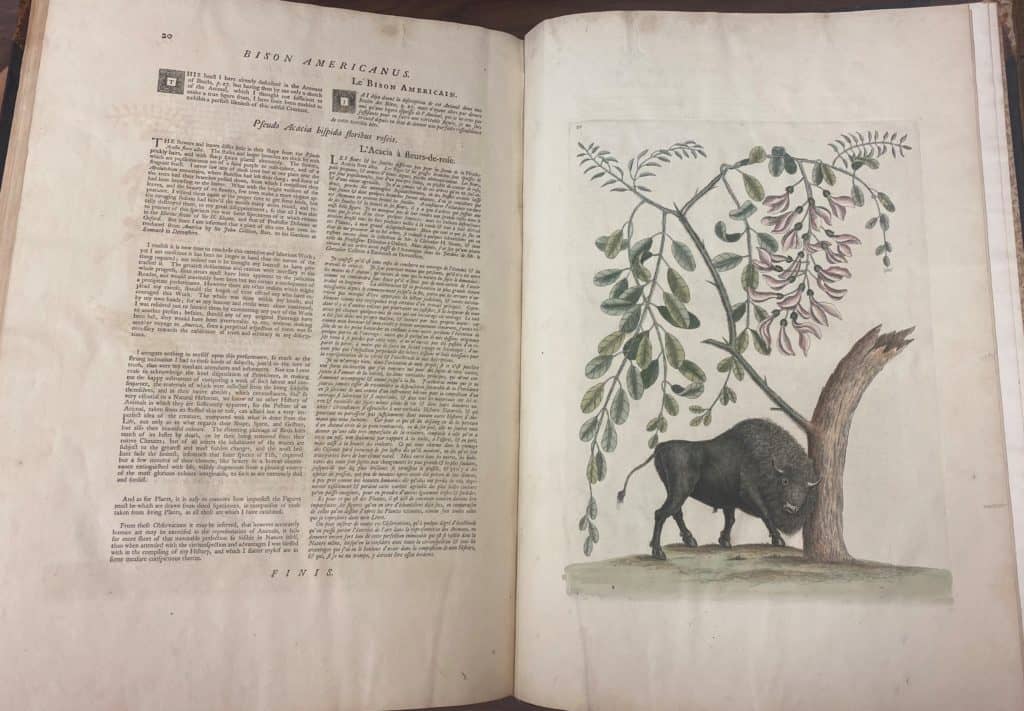In the morning of June 19, 1897, lightning struck the southwest corner of the library. Flames engulfed the building and approximately 25,000 of the 33,600 volumes and 15,000 pamphlets were destroyed. In 1891, Daniel H. Talbot donated his library to the University of Iowa. His collection contained about 4,000 volumes and about 2,700 volumes survived the fire of 1897. After the fire, his books were divided into different library collections at the University of Iowa and are slowly being found and brought to Special Collections where they will remain.
The 1899 Hawkeye Yearbook has a great article written by Ellen M. Rich, wife of librarian at the time of the fire, which shares more insight about the fire.
Daniel H. Talbot (1850-1911) was a lawyer who made his fortune by buying and selling abandoned homesteads and unwanted claims. He moved to Sioux City, Iowa, in 1870 where he began speculation in land scrip. The government allocated federal land to all veterans after the Civil War to encourage western settlement. Scrip was the legal document the soldiers received to recognize their rights to the land. Talbot devised a way around the laws against buying and trading these land rights, and he soon became very wealthy. He invested a portion of his money in real estate in Sioux City, including a large farm outside of the city. At this farm, he conducted breeding experiments on elk, bison, bears, wolves, monkeys, lions, as well as other animals. Talbot lost his fortune in the Panic of 1893, which was an economic depression in the United States that ended in 1897. To save his natural history collection, he hurriedly arranged a donation to the University of Iowa Museum of Natural History. His library was donated in 1890, before the Panic of 1893. Talbot died in a shack in North Riverside in 1911.
Talbot Ledger
This ledger documents a catalog of the Talbot collection before the Library Fire of 1897. It has all 4,000+ volumes handwritten and includes the title, author, year, number of volumes, publisher, and subject matter for the books Talbot donated. Talbot donated his private library to the State University of Iowa in 1891 with the condition that his library be kept as a private collection. His collection contains books relating to the natural sciences, travel, history, zoology, medicine, and agriculture. In 1911, Talbot donated another 300 volumes to the library. As of 1930, it was the strongest collection in the fields of natural science, travel, and history.
Images from University Libraries Records (RG21.0001.001) Oversized Box 5
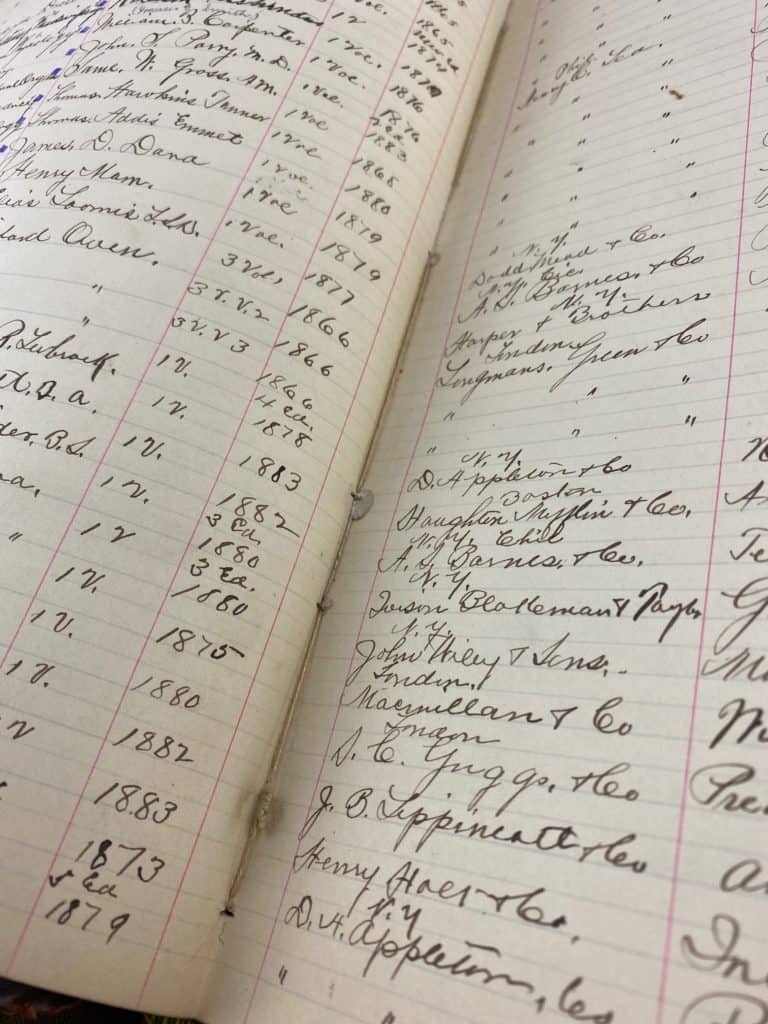
Take a closer look at the inside of the ledger. The writing is all in script and we are in the process of transcribing the information to look for the volumes in our stacks.
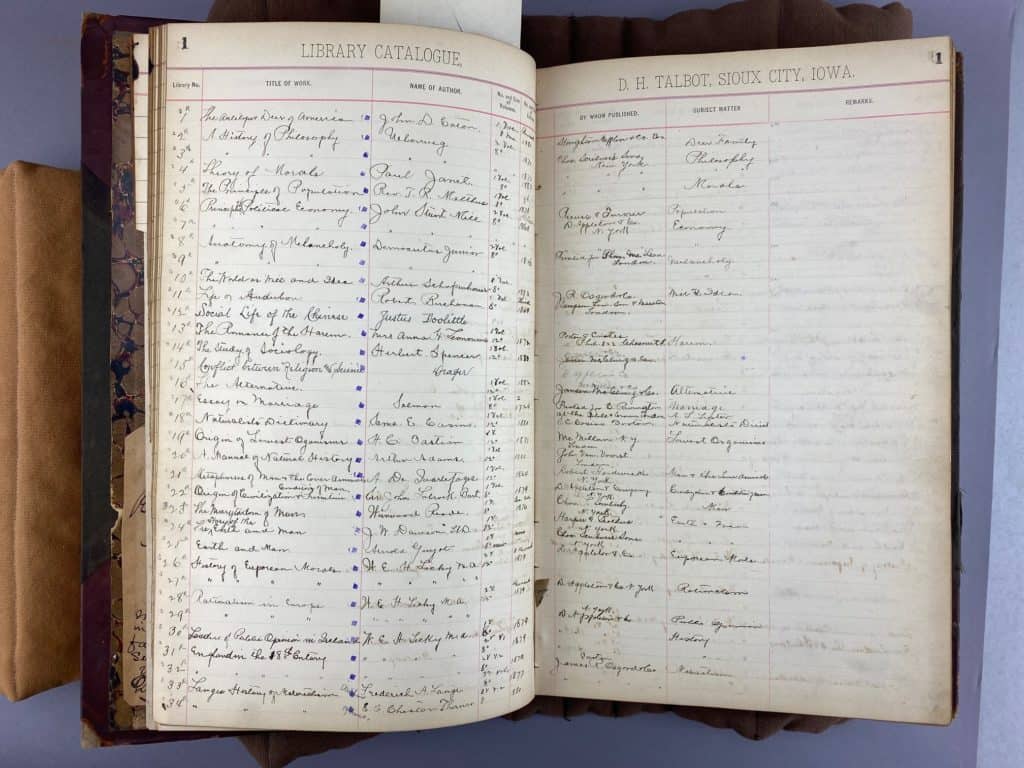
Here is an inside look at the ledger documenting Talbot’s collection. It lists the author’s name, the book title, the publication, the publisher, the number of volumes in the set, and any notes about the volume.
North Hall Library: Before 1897
North Hall on the State University of Iowa campus was originally constructed as a chapel. Until 1892, thousands of students and professors gathered there daily for chapel services. The library shared half of the chapel space, and in 1879 the University appointed its first librarian with the collection totaling 12,000 volumes. J.W. Rich was the first University Librarian.
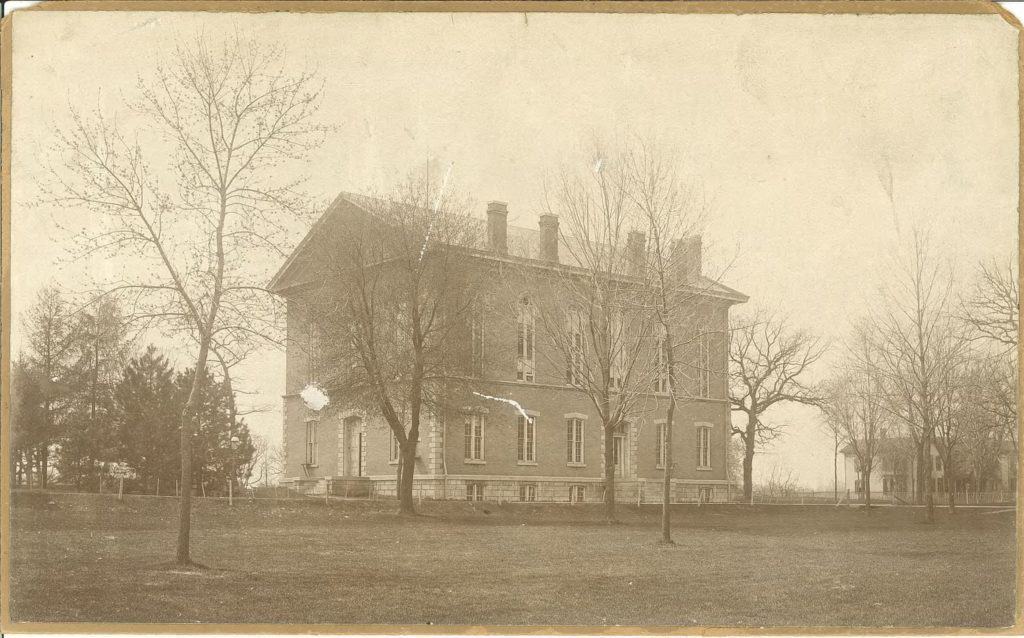
The North Hall was located on the Pentacrest when the fire happened. The library shared space with the campus chapel.
North Hall Library: After 1897 Fire
In the early morning of June 19, 1897, lightning struck the second chimney in the southwest corner of North Hall, causing a fire to spread throughout the library and building. Earlier that morning, there was a fireman tournament, which had ended the night before, and fire departments all over the state came to Iowa City for it. When word came that the library was fire, firemen and civilians came to the rescue. It soon became apparent that the library was doomed, so there was small hope of saving something before the roof caved in. The reference librarian, Miss Mary E. Barrett, was one of the first people in the building and saved the accession records from the librarian’s office. Mr. L. M. Leek was one of the firemen in the building trying to save a portion of the card catalog records, however Leek was caught under fallen timber and died in the flames. Books and shelves were ignited in the flames.
When flames subsided a bit, but not all the way, the librarian and a few firemen went into the building to carry out their fallen brethren and to rescue the books. From an article in The Daily Iowan in 1949, they wrote, “In about three hours, the largest and most comprehensive library in the state was reduced to 4,500 volumes. In this fire many rare and costly works were lost. One Iowa City fireman lost his life fighting in the blaze.” The books that were saved were temporarily housed at the Unitarian Church and basement of the Central Building until the library could be repaired.
A new library building was started and halted due to World War II. The new library wasn’t completed until 1951 and North Hall was demolished in 1949.
Not all books have significant damage
Even though Talbot lost about half of his collection in the fire, not all books suffered significant damage in the flames. This book in particular shows little burn marks along the fold-outs and on the page corners. Otherwise, the book has some discoloration and that is the extent of the damage.
Owned First Editions
Included in his collection, Talbot collected a few first editions of books including this book titled, The principall nauigations by Rchard Hakluyt. The book was published in 1589. It contain journals from explorers, sailing directions, reports, documents, and correspondence. Talbot gifted this in 1891 before the fire and it survived the flames without burn marks like other books in his collection. He also owned and donated a first edition Walt Whitman Leaves of Grass, which you can find in our collection.
Talbot Book Identifiers
After finding a partial list at the beginning of the search, it was determined that most of the books are stamped in purple lettering stating “Owned by D.H. Talbot” or have a bookplate stating it was from the library of D.H. Talbot. Most books were rebound in a generic binding, so some books were easy to pick up and identify. Looking for the bookplate on the front cover or stamp on the title page was the ticket to knowing if the book belonged to Talbot or not. If you find a book with the bookplate and/or stamp while in our reading room, please let a librarian know about the find! We have found a few hundred and are still in the hunt for more as we continue transcribing the complete list in the ledger.
While looking through the stacks, there were different things we were looking for.
Some books burned beautifully
The interest in the Talbot collection was started over a year ago right before the COVID-19 Pandemic shut down the library. This book was used in a class and the bookplate stating it was from the Talbot Library and it started a long-term research project. A flora of North America was burned beautifully along the back and I wondered what other books could have been burned and when the fire happened. Some books are burned along the edges and just rounded the corners out, and others were not burned at all.
Important Books to the Scientific World
The natural history of Carolina, Florida and The Bahama Islands, first published in 1754, was created by Mark Catesby, who was an English naturalist. He traveled to America in 1712 to stay with his sister in Virginia. There, he began collecting botanical specimens. When the Royal Society in England heard of his work, the society financed a second trip to America for Catesby to continue his work. Catesby was the first person to draw birds with relative accompanying plants, and some birds he captures have since become extinct.
This text was first published in 11 sections between 1734 and 1747, and it featured more than 200 hand-colored sketches.
The book not only was the first to show birds with relative plants, but it was also the earliest colored book on American birds and it explained about migration, which was unknown before this time (the thought was that birds hibernated in caves, hollow trees, or the beds of ponds).
In 1754, Catesby’s work was published as a two volume set, which was owned by Daniel H. Talbot, survived the library fire, and are currently in the stacks at Special Collections. If you would like to read a little more about Catesby’s text, take a look at this article from the Royal College of Surgeons of England.
Collection Highlights
Credits
Exhibition Curation
Meaghan Lemmenes
Practicum Supervisor
Kara Logsden
Lindsay Moen
Website
Ken Clinkenbeard
Additional Assistance
Eric Ensley
Lindsay Moen
Morghan Lemmenes
Damien Ihrig
Laura Michelson
Zoë Webb

